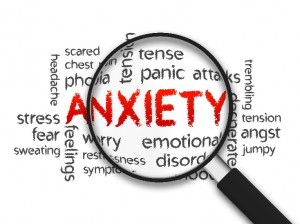What is depersonalization?
Depersonalization (or derealisation) is a type of anxiety disorder in which sufferers may feel as though they are detached from themselves or their surroundings. It is more common than most people believe, although usually lasting for only short periods of time, it can occasionally last in others from weeks or even months at a time. People who have experienced depersonalization describe the feeling as though they are in a ‘foggy or dream like state.’ Other factors of the disorder may include;
- Feeling disconnected from your feelings, emotions and physicality as well as your surroundings
- Feeling as though you’re out of control of your own speech and movements
- Feeling as though you’re not completely occupying your own body
- Dissociation from the rest of society
Although it’s unclear and can vary for each individual, research has shown that the most common triggers for depersonalization include;
- Stress
- Panic attacks
- Trauma
- Drug use (especially use of hallucinogens and cannabis)
Most individuals who regularly experience depersonalization describe themselves as fearful due to a lack or loss of control and worry that they are going to be stuck feeling the way they do forever.
However, it’s important to remember that what you are experiencing is temporary. It can help to re assure yourself that what you are feeling is caused by your central nervous system shutting down your emotions. Over time you can learn to recognise your own triggers and then work towards finding a way of managing them.
These triggers can set off a fight or flight mode reaction within your brain. Sometimes this can manifest as a panic attack. (It’s important to also note that often, when people have a panic attack that they don’t actually realise that what they experienced was a panic attack at all.)
The panic attack is activated by the fight or flight mode response as your brain was preparing for some type of threat. After you experience the panic attack your central nervous system becomes sensitised which can lead to to your emotions shutting down. This is when depersonalization starts to kick in.
The shutting down of your emotions causes the sensation of being in a dream, as if you’re looking at yourself from an outside perspective, like a warped out of body experience. Most of us don’t ordinarily see the world in such a way and this is why it can be so frightening; you’re looking at yourself and the world with a lack of emotions so of course this isn’t going to feel natural.
When you begin to think about it rationally, it starts to make a lot more sense. Our brains are wired to protect us, therefore if it perceives that something is wrong, it’s going to try and shut down the problem.
It’s important to look at why depersonalization happens in order for us to prevent it from continuing.
Depersonalization is a type of disorder, the root cause of which is anxiety, the key is therefore to manage this anxiety, then the depersonalization, which is a symptom of the anxiety, should disappear.
There are many ways to help manage and cope with anxiety; meditation, talking therapy, medication, to name just a few. It’s just about finding what works best for you. It can take time to work out the best ways to manage your own anxiety. Try different things and see what makes your feel calmer. Exercise can work for some people. Fresh air and walking for others. For some reading, a bath, candles – or even just slowing down and breathing. For others talking and using a support network. For many a sense of routine and structure. Remember there is always a way, you never have to struggle alone – sometimes its about taking that positive step in the right direction.



